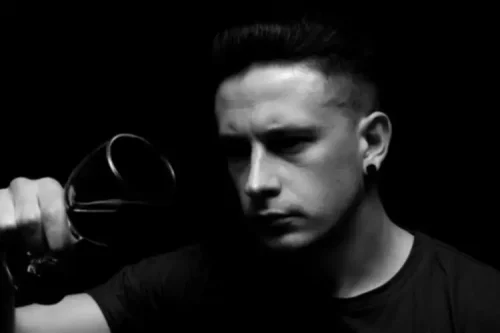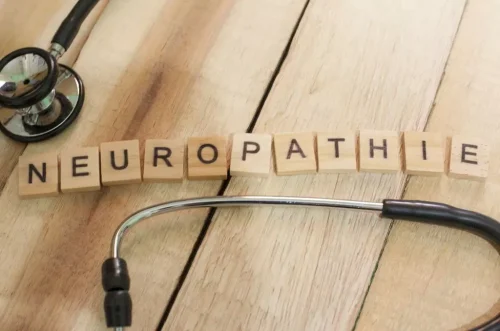
The current evidence favors symptom-triggered treatment, as it reduces the average length of stay, the total dosage of administered benzodiazepines, and the level of patient sedation. CIWA-Ar can be used to guide the need for symptom-triggered medication and ancillary rescue medication if a patient is on a fixed-dose schedule. This is why it’s important to go to medical detox for alcohol withdrawal.
- Such medical problems include altered blood chemistry, certain infections, and Wernicke’s syndrome (see the following section for a discussion on Wernicke’s syndrome) (Saitz 1995).
- Despite its legal status and cultural acceptance, it is a serious psychoactive substance that can profoundly affect your health.
- Since alcohol causes inhibitory effects on your brain, your brain may produce fewer of its own inhibitory effects.
- The periaqueductal gray is thought to trigger clonic seizures, whereas the pontine reticular formation is implicated in the generation of the tonic phase of audiogenic seizures (18).
- These sugar alcohols are not fully digestible, so they pass into the colon, where they may be fermented by the bacteria there, which may lead to bloating.
Behavioral Treatment

An alcohol withdrawal seizure is frequently a generalized tonic-clonic seizure. The person may cry or groan and fall to the floor as they lose consciousness. Additionally, they may bite their tongue which may cause the saliva to be blood-tinged. Your body is adaptable, and your brain chemistry will adjust to alcohol’s presence over time. Since alcohol causes inhibitory effects on your brain, your brain may produce fewer of its own inhibitory effects.
Multiple Detoxifications Kindle Susceptibility to Alcohol Withdrawal Seizures

Healthcare providers can use medications such as benzodiazepines (lorazepam, diazepam) to lower the risk of alcohol withdrawal seizures and treat them if they occur. Alcohol withdrawal seizures can occur 6-48 hours after the last drink, sometimes even 2-7 days after you stop alcohol consumption. Seizures (convulsions) occur during alcohol withdrawal due to changes in brain chemistry. https://ecosoberhouse.com/ But the relationship between alcohol intake and seizures is not straightforward. The frequency and setting for outpatient monitoring of AWS should be guided by symptom severity, risk of complications, and social factors, including reliable social support and a safe home environment. Blood pressure, pulse, and alcohol breath analysis should be obtained whenever possible.
Can alcohol withdrawal cause death?
- More serious withdrawal symptoms occur in approximately 10 percent of patients.
- These agents also have no activity against delirium or seizures so should not be used as monotherapy.
- Treatment can lessen these symptoms and help prevent harmful outcomes.
- Clients reside at the treatment center, where they also consume all meals, socialize, attend therapy, and participate in rehabilitative activities.
Β-Blockers have been shown to be effective for symptomatic treatment through reductions in autonomic activity [50]. Β-Blockers, however, should not be used as monotherapy and caution should be taken with use of these agents because they may mask signs and symptoms of alcohol withdrawal seizure a worsening clinical scenario. Α-Adrenergic agonists, also through reductions in autonomic activity, have also been used in the treatment of alcohol withdrawal. These agents also have no activity against delirium or seizures so should not be used as monotherapy.
- Proposed regiments include fixed dosing with as-needed doses available.
- When there is actual irritation in the stomach from drinking, bloating or other symptoms might last longer.
- Hallucinations that are not connected with DT’s occur in 3 to 10 percent of patients during severe AW from 12 hours to 7 days after cessation or reduction of alcohol consumption (Platz et al. 1995).
- Marked signs of anxiety commonly appear between 12 and 48 hours after cessation of alcohol consumption (Peyser 1982).
- Alcohol withdrawal seizures are similar to tonic-clonic seizures, which are often seen with issues like epilepsy.
- About 90% of the patients had 1 to 6 generalized tonic-clonic seizures, which occurred without warning, whereas 60% experienced multiple seizures, usually 2 to 4 within a 6-hour period.
The test is free, confidential, and no personal information is needed to receive the result. Barbiturates such as phenobarbital can be used to treat alcohol withdrawal but are far less commonly employed than benzodiazepines because of their narrow therapeutic index. Benzodiazepines are cross-tolerant with alcohol and are considered the first line for the treatment of alcohol withdrawal. In addition, alcohol withdrawal is characterized by insomnia and gastrointestinal disturbances (nausea and vomiting). Most symptoms will typically peak five days after they begin and will begin to decrease about five to seven days after they begin.
Alcohol Withdrawal and Seizures: Causes, Symptoms, and Prevention
Indeed, in accordance with the central role of the IC in triggering alcohol withdrawal seizures, multiple alcohol withdrawal episodes in rats facilitate the development of IC kindling (87,88). There is no recognized treatment to slow or prevent this kindling process. In animals, benzodiazepines have yielded variable effects, in some cases slowing withdrawal-induced kindling, and in other cases, causing paradoxical worsening (65,66,89). Whether other agents used in the treatment of alcohol withdrawal have antiepileptogenic potential remains to be determined. Alcohol withdrawal is a distinctive clinical syndrome with potentially serious consequences (see table) (American Psychiatric Association 1994). Symptoms begin as early as 6 hours after the initial decline from peak intoxication.
This sort of medication can be essential for people with severe alcohol dependence, to avoid the danger of having a seizure during withdrawal, which could result in permanent injury or death. Two commonly employed strategies are fixed multiple daily dosing and symptom-triggered treatment for individuals requiring medications to manage alcohol withdrawal. In fixed multiple daily dosing schedules, patients are typically placed on a gradual, tapering benzodiazepine schedule once their withdrawal symptoms are stabilized. In symptom-triggered treatment, benzodiazepines are only administered if patients are showing sufficient symptoms of alcohol withdrawal.
Timeline of Alcohol Withdrawal Symptoms

Binge drinking can trigger alcohol withdrawal seizures 6-72 hours after drinking stops. In a small number of people, binge drinking and alcohol withdrawal can cause status epilepticus, a potentially life-threatening condition where a person has prolonged seizure without regaining consciousness. It is estimated that 2 million Americans experience the symptoms of alcohol withdrawal each year (1). Generalized tonic–clonic seizures (rum fits) are the most dramatic and dangerous component of the alcohol withdrawal syndrome. The brain substrates that trigger these seizures are largely in the brainstem and, therefore, are distinct from those believed to be responsible for other clinically important seizure types. Moreover, because alcohol withdrawal seizures are pharmacologically induced, the pathophysiologic mechanisms almost certainly are different from those of the seizures that occur in genetic and acquired epilepsies.
